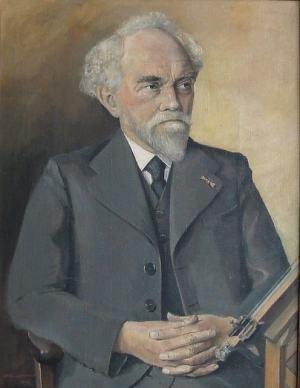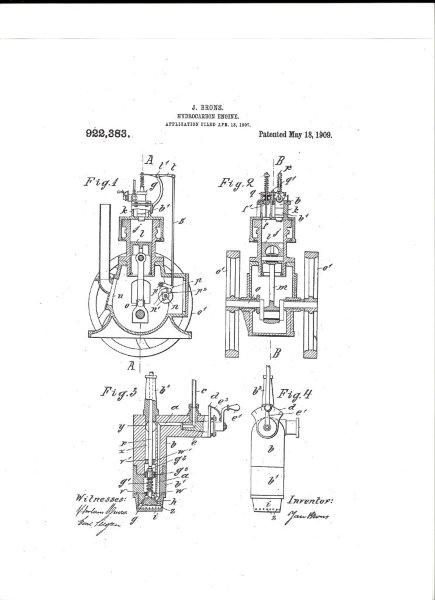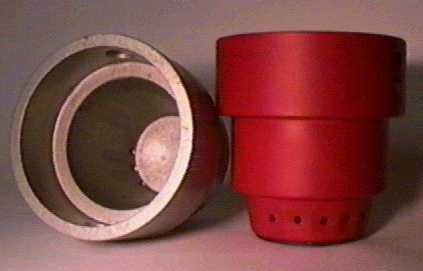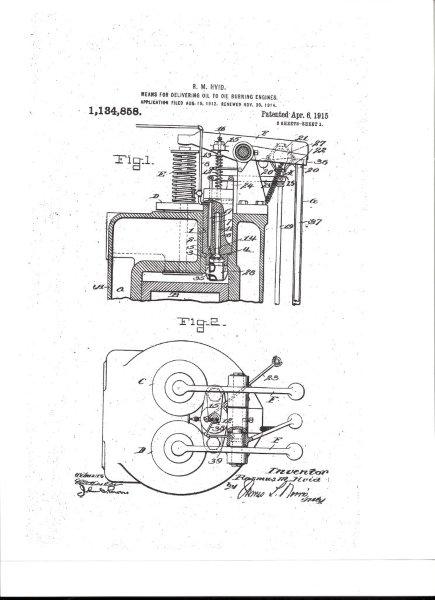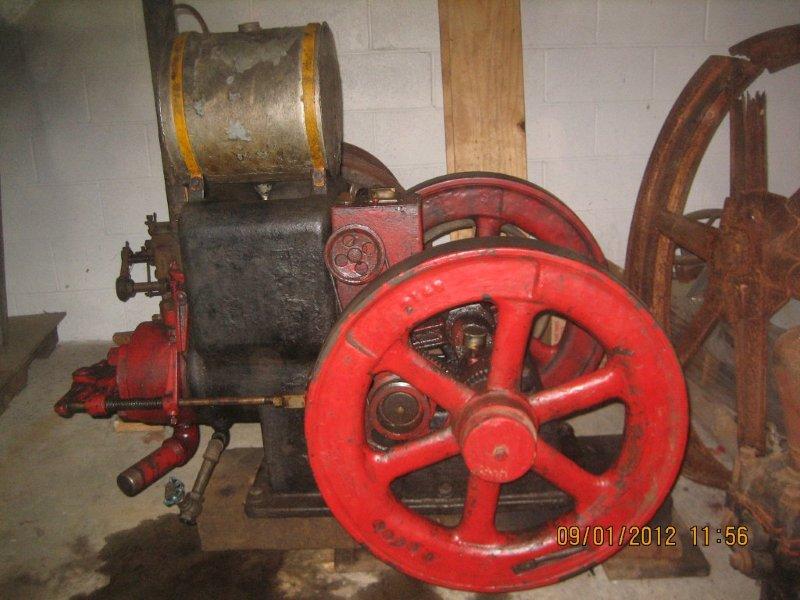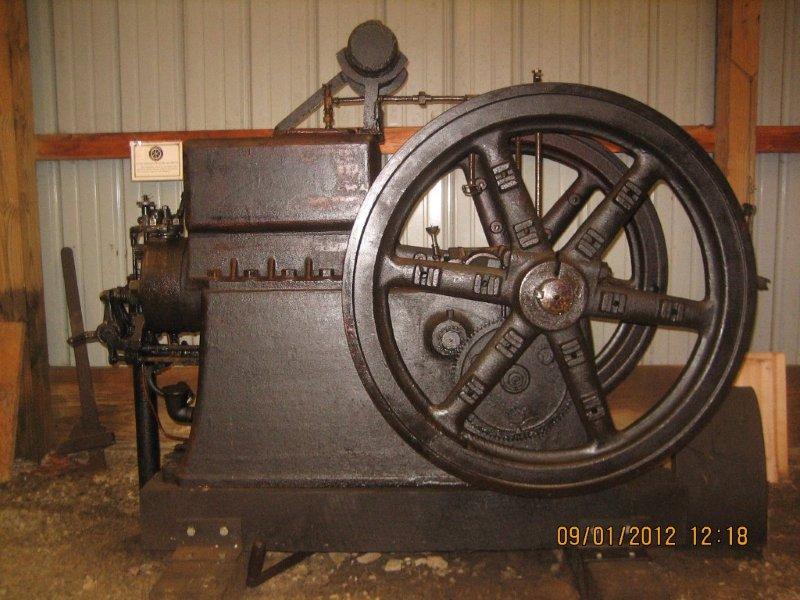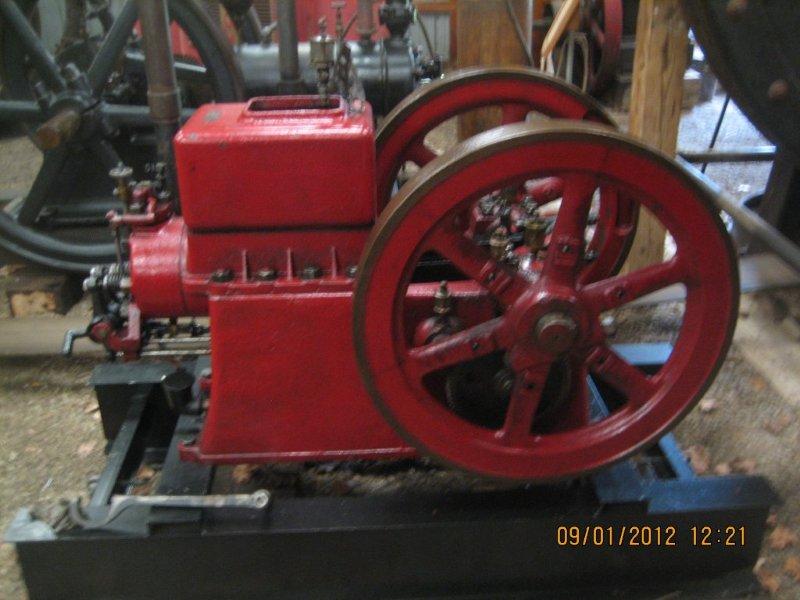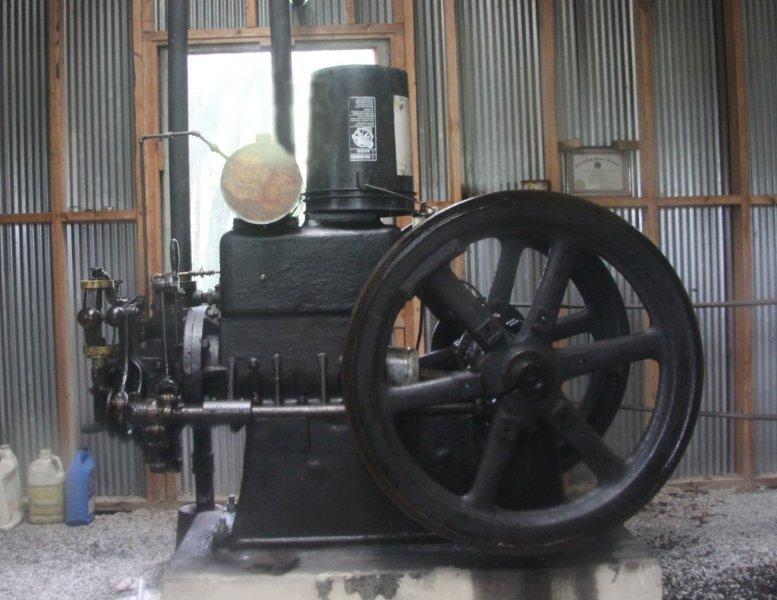|

October 2012
When a Diesel Isn't a Diesel
By
Paul Harvey
With the year rapidly ending and the October Show just around the
corner, the museum is already thinking of 2013 and our next season.
Our featured group of engines for next year will be "Oil
Engines." So what is an oil
engine? I guess one first thinks
of the diesels powering so many modern vehicles and equipment and that
is partially correct. An oil
engine is one that burns a liquid fuel that is sprayed into the cylinder
and ignited by the heat of compression and not an electric spark as in a
gas engine. It is true that
gasoline engines use liquid fuel and fuel injection spray, but it is
ignited by the spark and not the heat of compression.
This makes a big difference in design and economy.
At the turn of the last century, there was a myriad of designs of oil
engines and probably the most noted was the Diesel.
Dr. Rudolph Diesel, of
Germany,
invented a compression ignition engine about 1894 that was remarkably
efficient but very complicated in design.
He did not have the technology or materials to make the high
pressure injection systems of today's engines so he chose to use high
pressure air at about 1,000 psi to essentially blast the fuel into the
cylinder. He had found that he
needed about 500 psi of compression to heat the air enough to cause
combustion. This required a
direct connected multi stage air compressor and a very heavy and rigid
frame to support the inherent stresses.
These engines were used in marine and stationary applications and
the practice ended in the 1920s.
It should be noted that oil engines are frequently all grouped together
and are termed "diesels." When
this is done, although not correct, diesel is not capitalized.
The actual engines that follow Dr. Diesel's design are correctly
capitalized as "Diesels."
Actually preceding Diesel's design by two years was Herbert
Akroyd-Stuart of
England.
He invented a lower pressure compression ignition engine that was very
successful. It has been discussed
in an earlier issue of The Flywheel.
By eliminating the need for the high pressure air and all the
necessary equipment to produce it, he contributed much to what we now
know as diesels.
Another line of oil engines was the two-cycle, moderate compression, hot
bulb start ones based on the design of Carl Weiss and built by Augustus
Mietz of
New York City.
These required heating a bulb or similar device in the head for initial
start and then it would run on compression ignition.
This is very similar to the glow plugs in some of our engines of
today. Many makers soon followed
the initial Mietz and Weiss design in producing very successful
machines.
However, the topic of this writing, is the high compression engines that
used a spray cup to inject the oil.
This small cup received its charge of oil, metered by a needle
valve controlled by the governor on the intake stroke of the engine so
it was essentially gravity fed.
During the compression stroke, the cylinder temperature, as well as that
in the cup rose finally causing ignition of the oil in the cup.
This small explosion then sprayed and vaporized the oil out
through four small holes into the cylinder and then the secondary or
power explosion occurred in the main cylinder.
A very ingenious and efficient way to produce a low cost and yet
efficient oil engine.
This design was invented by Jan Brons (1865-1954)
of the
Netherlands.
See portrait in
Photo 1.
Jan initially became a carpenter but had a knack for mechanical
things and began experimenting with oil engines at an early age.
He was attracted to the Diesel engine and set about to make an
engine that would operate without the troublesome air compressor.
He was successful and awarded a patent in 1904.
See
Photo 2.
His engine operated well and soon he had a factory at
Appingedam,
Netherlands
producing them. The spray cup
pre-chamber was very simple as shown in
Photo 3 and made him
successful. By 1920, 95% of his
production was exported.
Production
of the Brons engine continued until 1946.
Finally the Brons design was introduced into
America. Rasmus Martin Hvid
(1883-1950)(pronounced "veed") was born in
Denmark
and became a naturalized
US
citizen. Being mechanically inclined, he studied the Brons engine and
made some changes to the spray cup. He applied for a
U.S.
patent in 1912 and was granted in 1915.
See Photo 4. Establishing
the R.M. Hvid Co. on
July 12, 1912,
in
Battle Creek,
Michigan,
he decided not to produce engines but to sell his patent license to
other firms for production. This proved very lucrative for him selling
a license for $2,500.00 and receiving a royalty of $5.00 for each engine
produced. By 1916, he had sold eleven licenses and the number was fast
increasing. It is interesting to note the his improvements in the spray
cup proved troublesome and he soon bought a license from Brons to
produce his design. This was a good move as it prevented any patent
infringements and continued Hvid's success.
One of the first licenses went to St. Marys Machine of
St. Marys,
Ohio,
and later of
St. Charles,
Missouri.
Under the direction of chief engineer, Haus. L. Knudsen, they developed
a line of very large and successful Hvid injection engines.
To current knowledge, these were the largest Hvids built in
America.
Photo 5 shows the four horsepower St. Marys at Coolspring Power Museum.
It originally powered an air compressor to start larger engines
at a Buckeye Pipe Line Co. station.
Another early licensee was the Hercules
Engine Company of Evansville,
Illinois. We are not sure whether St. Marys or
Hercules obtained the first license. Obtaining their license in 1915,
Hercules was already a major manufacturer of engines. Their line
consisted of horizontal hopper cooled farm engines of smaller horsepower
rating. They already had an excellent market with Sears and Roebuck
selling their engines under the Sears name of Economy. Hercules new
Hvid injection oil engine was termed the Thermoil and was made on their
gas engine frame using the higher compression Hvid principle. This
proved to be a disaster for both Hercules and Sears as the gas engine
frame just would not withstand the oil engine stresses and broken frames
were common. So many were returned that it proved to be a great
financial loss. We witnessed this same problem with the early adaption
of a gas engine to a diesel by General Motors. However, they did not
give up and returned with the redesigned Model U Thermoil. Initially
built in 6 hp and 8 hp, and later improved into 7 hp and 9 hp, these
engines were literally indestructible! They were successful but almost
impossible to start in cold weather. But when running, they proved to
be very powerful and economical being able to use many of cheaper heavy
oils.
In 1919, Clessie Cummins was tired of being a chauffeur and became
interested in oil engines. He was a rural farm boy with no formal
education but was especially interested in engines. He formed the
Cummins Engine Company in
Columbus,
Indiana
and obtained a license to build the Hvid engine. His engines were
similar to the Thermoil and were also sold by Sears. They were very
successful but Sears offered a money back guarantee so a farmer would
get one, use it for the season, then return it with some complaint.
Sears returned a great portion of these engines to him which nearly
caused bankruptcy. His former employer, Mr. Irwin, financed him and
went on the develop the Cummins diesel that we all know today. That
story is very interesting and well documented elsewhere.
Photo 6
shows the museum's 9 hp Model U Thermoil.
I acquired this engine in 1967 from the Eureka Pipe Line Company
of
West Virginia.
It was belted to a small National Transit triplex pump at their Eddy
Station which was located near Core, WV.
This was a tiny station that pumped crude oil from several wells
over the mountain to the larger Dolls Run station in Core.
The story goes that the engine one time wrapped up the belt which
flipped it off the foundation landing upside down.
It was merely reset and good as new!
Also told were stories of cold weather starting where the
engineers built a fire outside to boil a five gallon can of water to
pour into the hopper to heat the engine.
Then one got on the crank and the other pulled the belt to get it
running. It runs well here during
the summer months. I hauled this
engine home on my Dad's 1952 Ford F1 pickup truck and I think that was
the most it ever carried. This
was one of my early adventures to move an engine and it all came out so
well.
Photo 7 shows the museum's
7 hp Model U Thermoil.
Our final Hvid injection engine at Coolspring Power Museum is this 9 hp
Parmaco.
Photo 8.
It is essentially a Thermoil with many additions.
Note the side shaft and the vertical governor head.
Parmaco stands for Parkersburg (WV) Machine Company and a few
were built for pipe line use. Two
are noted to have survived. They
all were very cantankerous to start but quite dependable when running.
This one came from Star Station of the Buckeye Pipe Line Company
in
Ohio.
It is now set up in its own building driving the original horizontal
Parmaco pump. It moved crude oil
from a local lease to a larger station where the oil went on to the
refinery.
It is my hope that the reader has enjoyed this little venture into the
realm of an oil engine that is not a Diesel.
To see many more in operation, please attend our June 2013 show.
Now, our big Fall Show, Swap Meet, and Flea Market is fast
approaching. We will have many
exhibitors, a swap meet, and a good flea market.
Of course, many of the museum engines will be running with a
special night run on Friday evening starting at
7 pm.
There will be plenty of tasty food as well as our famous home made ice
cream with the New Hollands turning the freezers. It is October 18, 19,
and 20 so please try to attend.
For more information, please call 814-849-6883.
The museum will be closed for the winter after our October event,
but special showings and tours can be arranged.
Please call at least one week in advance to arrange.
See you then!
|

